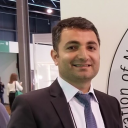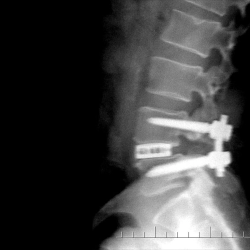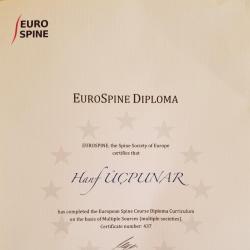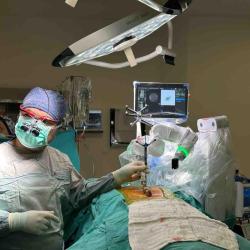What is limb lengthening surgery?
When is limb lengthening surgery performed?
Who are the ideal candidates for limb lengthening surgery?
How is limb lengthening surgery performed?
What is the recovery process like after limb lengthening surgery?
What are the risks associated with limb lengthening surgery?
How can I find the best doctors for limb lengthening surgery?
What are the costs of limb lengthening surgery?
What are the success rates of limb lengthening surgery?
Is physical therapy required after limb lengthening surgery?
Keywords:
Limb lengthening surgery
Limb lengthening procedure
Ideal candidates for limb lengthening surgery
Recovery process
Risks
Doctors
Costs
Success rates
Physical therapy
What is limb lengthening surgery and how is it performed?
Limb lengthening surgery is a procedure that is performed to increase the length of a person's limbs. This surgery can be done on the femur (thigh bone), tibia (shin bone), or both, depending on the patient's needs. During the surgery, the bone is cut and an external or internal device is attached to the bone to gradually lengthen it. The external device is called an external fixator and is attached to the outside of the leg, while the internal device is called an intramedullary nail and is placed inside the bone. The device is adjusted every day or a few times a day to slowly increase the length of the bone. The bone heals and new bone tissue grows to fill in the gap created by the lengthening. The entire process can take several months to a year or more, depending on the lengthening desired and the method used. The most common methods for limb lengthening are LON (Lengthening Over Nail), PRECICE 2.2, and STRYDE.
Limb lengthening procedures have several different methods, including LON (Lengthening Over Nail), PRECICE 2.2, and STRYDE. LON involves using both internal and external devices on each leg, and is highly reliable and cost-effective, but requires a second surgery to remove the external fixators and lock the internal nails in place. PRECICE 2.2 is a motorized rod method that is embedded into the patient's bone, minimizing discomfort and the risk of infection. It also allows for remote control extension without external fixators and has a shorter recovery time compared to LON. STRYDE is an upgraded version of PRECICE 2.2, with the added benefits of being made of stronger stainless steel, allowing for full weight bearing after a few months of crutch usage, and eliminating the need for blood thinners. It also has a shorter recovery time and no external fixators. All methods have their own advantages and disadvantages, and the best choice will depend on individual circumstances and preferences.
Will i have Pain during Limb Lengthening Period?
ANSWER:
After your surgery, you will be provided with PCA (patient-controlled analgesia) to manage pain. Although you may experience some discomfort in the first few days following surgery, the pain will gradually subside. In preparation for discharge, patients are transitioned to oral pain medication. Upon leaving the hospital, patients are prescribed oral medication to alleviate any residual pain. While patients may still feel some post-surgical pain within the first two weeks after the procedure, this typically diminishes over time. Notably, stretching exercises during physical therapy and attempting to fall asleep may prove uncomfortable, but we can provide medication to promote better sleep. In general, patients do not report significant pain during the daytime. Importantly, the leg lengthening process is typically painless, with most patients experiencing minimal discomfort during the majority of the procedure.
How will i grow taller?
There is a surgical procedure called limb lengthening that can help increase your height. The procedure involves breaking the bones in your legs and using a device to gradually stretch the bones apart, allowing new bone tissue to form in the gap and lengthen the bone. This procedure can be performed up to 3 or 4 times a day, depending on the method used, and can increase your height by approximately 1mm per day.
Can i have both Tibia and Femur surgery at the same time?
ANSWER:
It is possible to have both femur and tibia surgery at the same time, but whether or not it's recommended will depend on a variety of factors, including the patient's overall health and the specific details of their case. In some cases, it may be more appropriate to perform one surgery and then wait for the patient to fully recover before performing the second surgery. Additionally, there is a surgical technique called quadrilateral limb lengthening that can lengthen both the femur and tibia simultaneously, but this procedure is not suitable for all patients. It's important to consult with a qualified medical professional to determine the best course of action for your individual needs. If you are considering limb lengthening surgery, be sure to ask about package options and what is included in the cost of the procedure.
QUESTION:
How do I book a surgery date?
ANSWER:
Please email Assoc. Prof. Dr. Hanifi Üçpunar hanifiucpunar@gmail.com or call from: +905363990032 who will help you find a date for surgery.
QUESTION:
Do i need to send Deposit to my Limb Lengthening surgery?
ANSWER:
No, we do not ask deposit to book surgery but we require a screen shot of your purchased flight ticket as proof that you are coming for your surgery.
QUESTION:
How do i pay my surgery package?
ANSWER:
We accept payments after consultation with in our office as only Cash or Wire Transfer Online. Unfortunately we do not accept Credit or Debit Cards. We do not do installments or payment plans.
QUESTION:
Which hospital will i be hospitalized?
ANSWER:
We do our Limb Lengthening surgeries at a hospital that have 30 ICU rooms. Limb Lengthening Surgery is a major surgery that requires a high-end hospitalization service to have complicationless surgery and post-op care.
QUESTION:
What are the risks associated with limb lengthening surgery?
ANSWER:
Limb lengthening surgery, like any surgical procedure, carries some risks. Some of the potential risks associated with this surgery include surgical complications, risks associated with anesthesia, blood clots (embolisms), infection, joint stiffness, circulation disorders, or pain due to nerve tension. While these risks are relatively low, it's important for patients to be aware of them before making a decision about whether or not to undergo limb lengthening surgery.
If the patient has undergone the LON Method surgery, they may experience tiny infections at the exhausts of the nails, but these are easily treatable with clean dressings and, if needed, oral antibiotics. It's important to note that infections are very rare in patients who have undergone the Precice 2.2 or STRYDE procedures.
It's essential that patients thoroughly discuss the potential risks and benefits of limb lengthening surgery with a qualified medical professional before deciding to undergo the procedure. The medical team can help the patient understand the specific risks associated with their individual case and provide guidance on how to manage and minimize these risks.
QUESTION:
Who CAN NOT have Limb Lengthening surgery?
ANSWER:
While limb lengthening surgery can be a viable option for some people, there are certain conditions and circumstances that may make the procedure unsuitable or too risky for certain individuals. For example, individuals with blood clotting disorders may not be good candidates for limb lengthening surgery, as this condition can increase the risk of developing blood clots during the procedure. Similarly, people with HIV/AIDS or active infections may not be able to undergo the surgery due to the risk of complications and infections.
Another condition that may disqualify a person from limb lengthening surgery is body dysmorphic disorder (BDD), which is a mental health condition characterized by obsessive thoughts and anxiety related to one's appearance. People with BDD may be unsatisfied with the results of limb lengthening surgery, leading to further mental distress and dissatisfaction.
In addition, it's important for people considering limb lengthening surgery to be aware that the success of the procedure relies heavily on the patient's ability to fully commit to the lengthening process. Patients who are unable or unwilling to comply with the rigorous exercise regimen and other responsibilities associated with the surgery may not be good candidates for the procedure.
Ultimately, it's important for anyone considering limb lengthening surgery to discuss their individual circumstances and health status with a qualified medical professional to determine whether the procedure is a safe and appropriate option for them.
QUESTION:
What kind of Limb Lengthening surgery methods exist?
ANSWER:
Currenty BETZ, Guichet, Ilizarov, Holyfix, LON, Precice 2.2, Precice STRYDE methods are being There are several different types of limb lengthening surgery methods that are currently used around the world. These include the BETZ method, the Guichet method, the Ilizarov method, the Holyfix method, the LON method, and the Precice 2.2 and Precice STRYDE methods.
The BETZ method, also known as the Bilateral External Tibial Distraction method, involves using external fixation devices to lengthen both legs at the same time. The Guichet method, on the other hand, involves lengthening the femur bone using an intramedullary rod.
The Ilizarov method is a widely-used technique that involves the use of an external frame to gradually lengthen the bone. The Holyfix method is similar to the Ilizarov method but uses a different type of frame that is more compact and easier to use.
The LON method," involves the use of a special nail that is inserted into the bone and then gradually lengthened using an external remote control. The Precice 2.2 and Precice STRYDE methods also use a special nail that is inserted into the bone, but these nails can be lengthened internally using a magnetic device.
It's important to note that each of these methods has its own advantages and disadvantages, and the best option for a particular patient will depend on their individual circumstances and goals. A qualified medical professional can help patients understand the different options and make an informed decision about which method is right for them.
QUESTION:
How does LON Method work?
ANSWER:
During the 1st stage of the surgery, an intramedullary nail is inserted into the bone you wish to have surgery and then an external fixator device is attached to the leg from outside. During the limb lengthening period, the intramedullary nail prevents angular deformity. When limb lengthening is completed, the external fixator can be removed with the completion of the internal fixation (screw insertion). This method was a groundbreaking development compare to the other methods, that only involved the use of an external fixators without internal nail, which causes misalignment most of the time. Thus, currently Lengthening Over Nail (LON Method) is the most commonly performed Limb Lengthening surgery method in the world by Orthopedic Surgeons.
Furthermore, LON Method is a minimally invasive procedure with a smaller incision size compared to traditional limb lengthening methods. This leads to less pain and faster recovery times for the patient. Additionally, LON Method has a lower risk of infection due to the smaller incision size and the internal fixation provided by the intramedullary nail. It is important to note that LON Method requires a longer consolidation period compared to other methods, but this also means a lower risk of bone consolidation problems. Overall, LON Method has proven to be a safe and effective method for cosmetic limb lengthening.
QUESTION:
How does Precice 2.2 and Precice STRYDE Methods work?
ANSWER:
The patient or their helper at the hotel does their limb lengthening during the first day. The limb lengthening is done as 0.33mm as 3 times a day. The limb lengthening is done by using a special device called the ERC (External Remote Control) device. Our orthopedic technician will train you to do this until you are comfortable using the ERC device first day. Each patient receives an ERC. The ERC must be returned at the end of the limb lengthening to avoid being billed by Ellipse echnologies for the device ($30,000 cost). As long as it is returned, there is no charge for the ERC device.
Both Precice 2.2 and Precice STRYDE Methods utilize an internal telescopic rod that is inserted into the bone. This rod is attached to an external remote control device, which allows the patient to perform the limb lengthening themselves, with guidance from the surgeon or medical staff. The limb lengthening process is controlled and monitored through the use of an electronic magnet that is placed over the skin and connected to the internal telescopic rod.
One of the main advantages of Precice 2.2 and Precice STRYDE Methods is that they are minimally invasive, with a smaller incision size compared to traditional limb lengthening methods. This leads to less pain and faster recovery times for the patient. Additionally, these methods offer precise control over the lengthening process, allowing for more accurate and consistent results.
It is important to note that the lengthening process with Precice 2.2 and Precice STRYDE Methods is slower compared to other methods, with an average of 1mm per day. This is due to the fact that the lengthening process is done in smaller increments to minimize the risk of complications and improve bone consolidation. However, this also means that the patient will need to undergo a longer consolidation period to allow the bone to fully heal and consolidate. Overall, Precice 2.2 and Precice STRYDE Methods have proven to be safe and effective methods for cosmetic limb lengthening.
QUESTION:
When will I have x-rays done?
ANSWER:
Starting from limb lengthening starting date every two weeks. Our Mobile X-ray staff and Mobile X-ray Device will be brought to your room to take your X-rays. From these X-rays we will check your progress and healing, so according to your healing speed, we may order you to decrease or increase the limb lengthening speed to prevent early union or noneunion of your bones. If the patient goes back to his/her country during limb lengthening period, he/she must send us X-rays for follow up every 15 days.
Additionally, it's important to note that X-rays are not only done during the limb lengthening period but also during the pre-operative evaluation process to assess the condition of the bones and joints. X-rays may also be done during the post-operative period to monitor the healing process and ensure that the bones are properly aligned. The frequency of these X-rays may vary depending on the individual patient's needs and the surgical method used. It's important to follow the surgeon's instructions and attend all scheduled X-ray appointments to ensure the best possible outcome of the surgery.
QUESTION:
What is the safe amount that can be extended and why can more length can not be done?
ANSWER:
The limits of limb lengthening are the soft tissues. The risk of complications from limb lengthening increases with increased length. There is no risk up to 5cm according to our hundreds of previous patients.
Between 5-8cm is medium risk and over 8cm is high risk. For example to achieve 10cm of limb lengthening; it is
much safer to lengthen the femur and tibia each by 5cm than to lengthen either bone by 10cm.
It is important to note that each patient's case is unique and the safe amount of lengthening varies depending on the patient's individual circumstances, such as age, weight, bone density, and overall health. The orthopedic surgeon will evaluate each patient's case carefully and determine the safe amount of lengthening that can be done without compromising the patient's health and safety. In addition, it's crucial to follow the post-operative care instructions given by the surgeon to ensure a smooth recovery and minimize the risks associated with limb lengthening surgery.
QUESTION:
Can I get back my pre-surgery health?
ANSWER:
Limb lengthening procedure may take some time, but eventually you can get back your pre- In addition to what has been mentioned, it is important to note that the recovery period may vary depending on the individual and the extent of the surgery. It is essential to follow the post-operative instructions provided by your doctor and attend all follow-up appointments to monitor your progress. Physical therapy is also a crucial part of the recovery process, as it helps to improve muscle strength, flexibility, and range of motion. It is important to avoid high-impact activities or sports during the recovery period and gradually return to normal activities as advised by your doctor. With proper care and patience, most patients can regain their pre-surgery health and lead a normal, active life.
QUESTION:
How are the scars after surgery?
ANSWER:
We use a minimally invasive method to put the limb lengthening device into the bones. A 1 to 1.5cm incision is made at the hip area, and 4 or 5 less than one cm incisions are made on the side of the thigh. These scars are so small they are not very noticeable. Most look no bigger than a mosquito bite. For the tibia there are more incisions. The incision to cut is about 1 cm long. The nail insertion incision is again 1 to 1.5cm long and the rest of the incisions all less than one cm.
In addition, it is important to note that proper care and maintenance of the incision sites is crucial for the healing process and minimizing scarring. Your doctor will provide specific instructions on how to care for the incisions and may recommend using certain ointments or dressings. It is important to follow these instructions closely and avoid activities that may cause excessive strain on the incision sites. With proper care and time, the scars will fade and become less noticeable over time. However, the healing process can vary from person to person and may take several months.
QUESTION:
What can I do to prepare for surgery?
ANSWER:
As Physical preparation: Stretching exercises may help.
For femur limb lengthening:
1) iliotibial band; lie on your side, extend your hip so your thigh is in line with your body and flex your knee. In that position, try and bring the flexed knee towards the ground. Also, you can do cross-leg stretches with the hip straight. These stretch the IT band.
2) Quadriceps and especially the rectus femoris muscle (bend knee with straightening of hip at the same time. Can be done standing while pulling foot behind butt and leaning back or kneeling with leaning back).
3) Hamstrings: knee straightening while flexing hip.
For tibial limb lengthening: Achilles tendon: heel cord; maximum dorsiflexion (foot up) with full knee extension (straight).
Most importantly stop smoking and exposure to second hand smoke.
Additionally, it is important to have a healthy diet and maintain a healthy weight prior to surgery. Being in good physical condition can help with the healing process and reduce the risk of complications. It is also recommended to avoid alcohol and drugs before and after surgery as they can interfere with anesthesia and pain medications. It is important to discuss any medications or supplements you are taking with your doctor before surgery as some may need to be temporarily stopped. Lastly, make sure to follow any specific instructions given by your doctor regarding fasting, showering, and clothing to wear on the day of surgery.
Most importantly stop smoking and exposure to second hand smoke.
QUESTION:
Will I see surgeon before surgery and have a consultation?
ANSWER:
Yes, a day before your surgery you will be physically examined by our surgeon and have a consultation.
QUESTION:
When do I return to my daily life after surgery?
ANSWER:
The timeline for returning to daily activities after limb lengthening surgery varies depending on the method used. If you undergo the LON method, you will typically be able to remove the external fixator devices within 2-3 months, depending on your desired height gain. For those who opt for the Precice 2.2 or STRYDE internal devices, you will stop using the remote control unit once your goal is achieved. After that, it's essential to perform daily stretching and muscle exercises diligently. If you commit to the post-operative rehabilitation process, you can expect to start walking independently without assistance in 3-4 months after the limb lengthening period.
QUESTION:
Can I walk with a device on my legs if i choose LON Method?
ANSWER:
You can walk at home or get out to walk with devices on your legs. It is advisable to walk as long as it is not too extreme. At the same time, you can also do upper body workouts and exercises requires you to not stand too much.
QUESTION:
What are the difficulties of this surgery?
ANSWER:
Yes, you can walk while wearing the external fixator devices on your legs, but it's recommended to avoid any extreme activities. You can also perform upper body workouts and exercises that do not require you to stand for prolonged periods of time. It's important to follow your doctor's instructions and take it easy while walking with the devices on to avoid any injuries.
If you have more questions you can ask them to us by filling Contact Form, by email or simply send your question by WhatsApp to get your answer quickly.
Assoc. Prof. Dr. Hanifi Üçpunar
Hanifiucpunar@gmail.com











